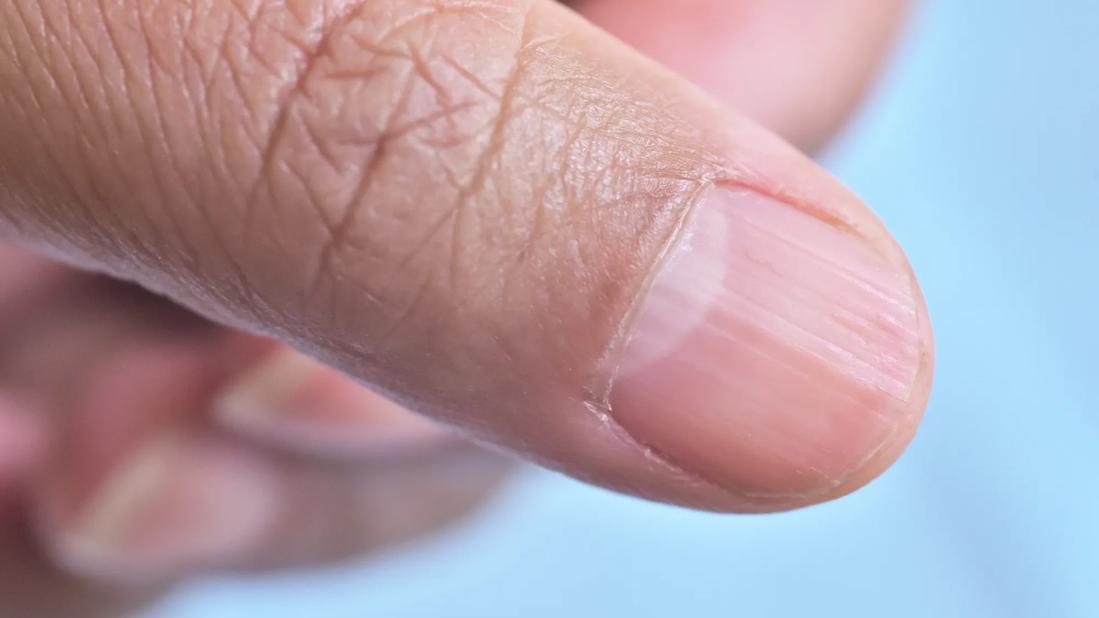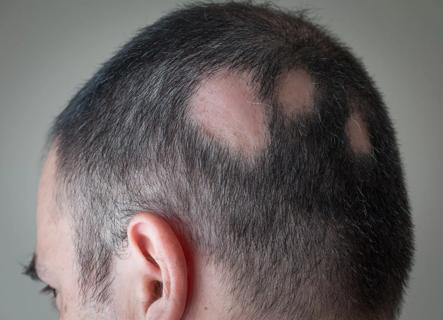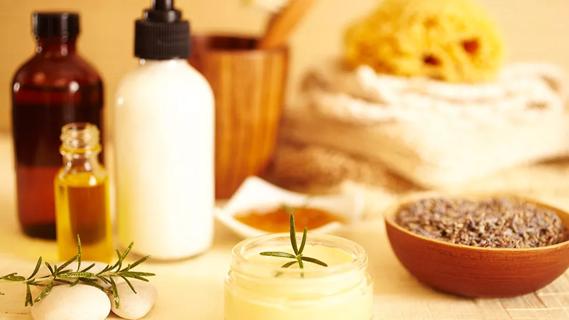You may see pitting, brittleness or ridges in your fingernails and toenails

On average, about 20% to 30% of people with alopecia areata (an autoimmune disease that causes patchy hair loss) experience changes to their fingernails and toenails. If you notice alopecia areata nail changes, your healthcare provider can provide guidance on how to care for and treat your nails.
Advertisement
Cleveland Clinic is a non-profit academic medical center. Advertising on our site helps support our mission. We do not endorse non-Cleveland Clinic products or services. Policy
When you have alopecia areata, your immune system can target structures at the root of the nail, leading to inflammation and nail changes like:
Most of these nail changes don’t typically cause pain, says dermatologist Stephanie Trovato, MD. While they may happen after or at the same time as hair loss, they can also happen before you notice hair loss.
Alopecia areata universalis, which causes total hair loss on your scalp and body, is more likely to cause nail changes than other types of alopecia areata.
It’s important to keep your nails healthy. Dr. Trovato offers the following tips:
Advertisement
Should you also consider adding a hair and nail growth supplement like a vitamin B complex, vitamin D, vitamin E or biotin?
“I recommend discussing with your primary care doctor or dermatologist to decide if supplements are needed,” advises Dr. Trovato.
Your healthcare provider may suggest the following treatment options:
After you start treatment, it may take a few months before you see new hair growth — and you may need to keep treating your nails even after your hair grows back, says Dr. Trovato.
If you notice hair loss or nail changes, see your healthcare provider, who can provide a diagnosis and offer treatment options.
“If your nail changes are bothersome or concerning, don’t hesitate to see your doctor,” Dr. Trovato stresses.
Advertisement
Learn more about our editorial process.
Advertisement

Take steps to reduce stress by practicing meditation, finding time to relax and maintaining a healthy lifestyle

Your immune system may attack hair follicles anywhere on your body

It’s normal to lose around 50 to 150 strands per day to routine hair shedding

Studies are mixed, but frequently wearing very tight, warm hats could stress your follicles and lead to hair loss

Things like stress, heated styling and other health conditions may cause you to lose more hair than normal

Creatine does cause some side effects, but hair loss probably isn’t one of them

A gentle hair care routine, stress reduction and sun protection can help reduce flares and maintain your locks

Home remedies may help your hair, but don’t expect them to cure the autoimmune disease

The ‘sunshine vitamin’ is found naturally in some fish and is added to other foods

Autism and ADHD often go hand in hand, giving rise to the term AuDHD

The Yuzpe regimen is less effective than other forms of emergency contraceptives, and it’s associated with more side effects